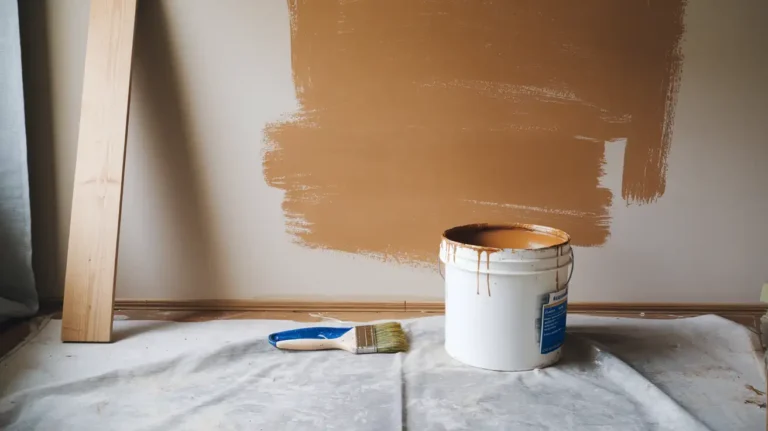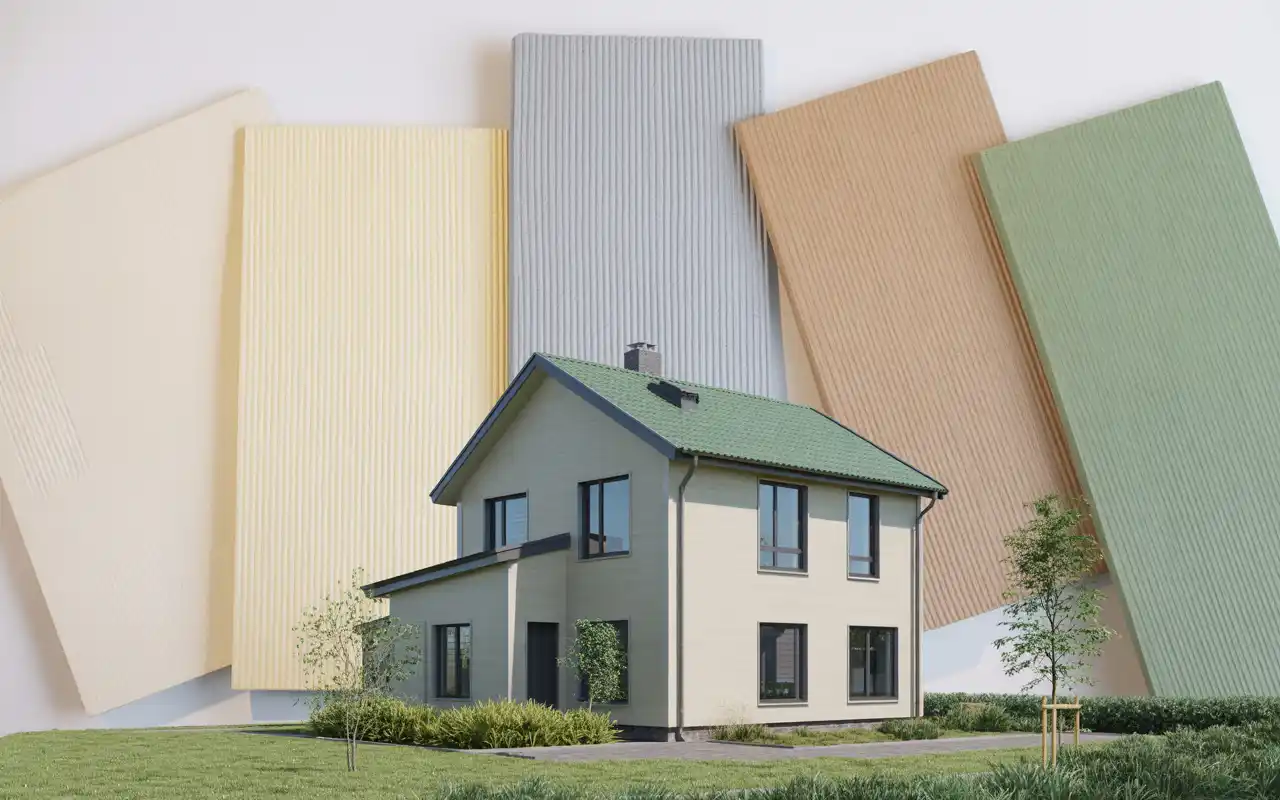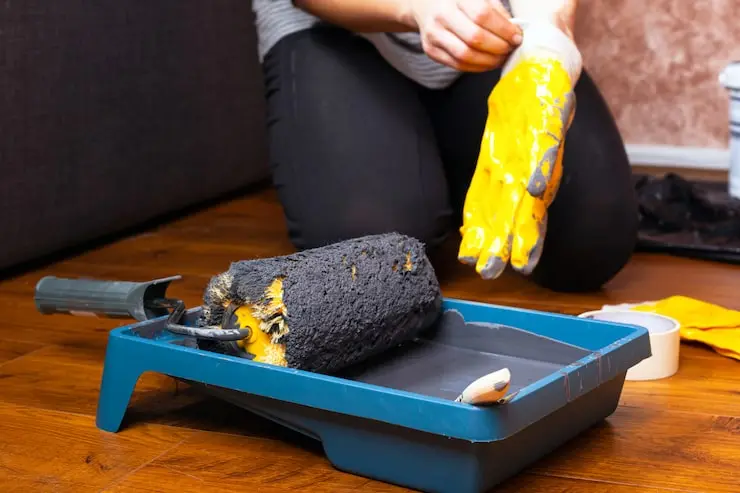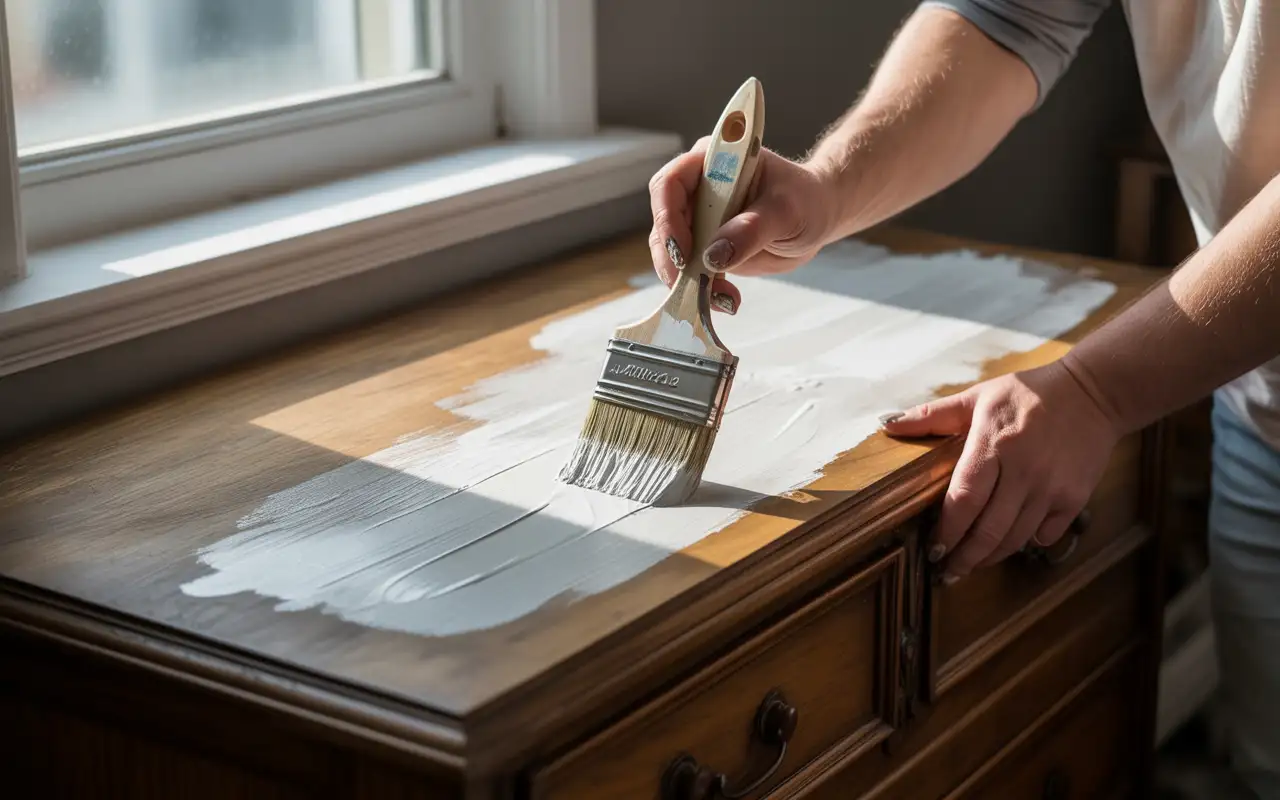Painting over old oil-based paint can seem like a daunting task. The fear of the new paint peeling or chipping is very real. You’ve heard the horror stories. But achieving a perfect, long-lasting finish is entirely possible. This guide will show you how to paint over oil based paint without any stress. Whether you are using a modern water-based paint or another oil-based coating, we have you covered. We will give you the secrets to a professional-quality job that lasts. You will learn about proper prep, the best products to use, and all the insider tips for success.
Table of Contents
Benefits of Water-Based Paint
For many years, oil-based paint was the standard for doors, trim, and cabinets. It was known for its durability and hard finish. However, modern paint technology has brought major improvements to water-based paint. These are also known as latex or acrylic paints. They have many advantages that make them the preferred choice for most projects. These benefits are a big reason to make the switch.
Water-based paints offer an easier cleanup. You do not need harsh chemical thinners. Soap and water are all you need to clean your brushes and rollers. This saves you money and is better for the environment. You also do not have to deal with strong chemical fumes. The faster drying time of water-based paints is also a huge plus. This lets you apply a second coat much sooner. You can finish your project in a single day.
One of the most important benefits is their low level of Volatile Organic Compounds (VOCs). These compounds release gases into the air that can be harmful. The lower VOCs in today’s water-based paints mean better indoor air quality. This is especially good for older homes. Water-based paints are also more flexible. They resist cracking and yellowing over time. This gives you a great, professional-looking finish for many years.
How to Paint Over Oil Based Paint with Water-Based Paint
![How to Paint Over Oil Based Paint [5 Simple Steps]](https://sandiegohomeremodeling.com/wp-content/uploads/2025/03/How-to-Paint-Over-Oil-Based-Paint-1-768x431.webp)
The most common mistake people make when painting over oil based paint is skipping the prep work. The secret to a successful paint job is not the paint itself. It is the work you do before you even open a can of paint. Without proper prep, your new water-based paint will not stick. It will chip or peel off in sheets. Let’s get into the crucial steps for a flawless finish.
Step 1: Preparation is Non-Negotiable
You must prepare the surface correctly. This is the most important part of the entire job. It guarantees a lasting bond between the old and new paint.
First, you need to clean the surface. Use a heavy-duty cleaner like Trisodium Phosphate (TSP). This will remove all dirt, grease, and grime. Mix the TSP with warm water. Wipe down the entire surface with a sponge. Be sure to wear gloves. Then, rinse the surface with a clean, wet sponge. Let it dry completely.
Next, you must sand the surface. You cannot skip this step. The smooth, glossy surfaces of oil-based paint do not provide a good grip for new paint. Light sanding with fine-grit sandpaper (around 120-150 grit) creates a “tooth.” This is a rough texture that the new primer can bond to. Sand the entire surface lightly. You do not need to remove all the paint. You just need to dull the finish. Make sure to wear a dust mask to avoid breathing in the dust. This is especially important in older homes where the paint could contain lead.
After sanding, you must remove all dust. Use a vacuum with a brush attachment. Then, wipe the surface with a tack cloth or a damp cloth. A quick wipe with denatured alcohol is a great way to ensure all residue is gone. This guarantees a perfectly clean surface for the next step.
Step 2: Choosing and Applying the Right Primer
A specialized primer is the secret to success when painting on top of oil based paint. This primer acts as a bonding agent. It creates a bridge between the old oil-based coating and your new water-based topcoat. You cannot use a regular water-based primer here. It will not stick.
When it comes to primers, you have a few options. A shellac-based primer is the gold standard. It sticks to almost any surface and blocks stains from bleeding through. Zinsser B-I-N is a common brand. It dries very quickly. A high-quality oil-based bonding primer is another great choice. It also provides fantastic adhesion and durability. Water-based bonding primers can also work. But they are best for surfaces with light use.
Apply a thin, even coat of your chosen primer. Follow the directions on the can for drying time. This is very important. Let it dry completely before moving on. Sometimes a second coat is needed for deep color changes.
Step 3: Applying the Water-Based Topcoat
Now you can finally apply your water based paint. Choose a high quality acrylic or latex paint. A great topcoat can make a huge difference. Apply the first coat with a good brush or roller. Use smooth, even strokes. Do not apply too much paint at once. This can cause drips and runs.
After the first coat is dry, you can lightly sand the surface again. Use a very fine grit sandpaper (220 grit or higher). This will knock down any small imperfections. It will give you a glass-smooth finish. Make sure to wipe away the dust before applying the final coat.
Apply the final coat of paint with the same care as the first. Once it is fully dry, you will have a beautiful and long-lasting finish. This process allows you to successfully use water-based paint over oil. This is often the main goal for many people. It answers the question, can latex go over oil based paint.
Tips for Painting Over Oil-Based Paint with Oil-Based Paint

While most people switch to water-based paints, there may be times when you want to use another oil-based coating. The process for painting over oil based paint with oil based paint is a bit simpler. The chemical compositions are similar. This makes for a strong bond.
However, proper preparation is still vital. You must still clean and sand the surface. This creates the best possible grip for the new paint. You can use a primer here, but it is not as necessary for adhesion as it is with water-based paint. A primer is still a good idea for changing your paint color. It also helps to get a smoother finish.
Ventilation is key with this method. Oil-based paints have very strong fumes. Make sure you have open windows and fans running. A respirator is a good idea. Also, remember that oil-based paints have longer drying times. Plan your project accordingly. It may take longer to finish. This is the simplest way to go about painting oil over oil.
Ideal Primers and Topcoats for Painting Over Oil-Based Paint
![How to Paint Over Oil Based Paint [5 Simple Steps]](https://sandiegohomeremodeling.com/wp-content/uploads/2025/03/Ideal-Primers-and-Topcoats-for-Painting-Over-Oil-Based-Paint-768x431.webp)
Choosing the right products is a major step in the process. The primer is the most important part. It is the real hero of this job.
The Primer Hierarchy
- Best Overall: Shellac-based primers are the top choice. Brands like Zinsser B-I-N are famous for a reason. They stick to even the shiniest surfaces. They block stains and seal odors. They dry very fast. This lets you get on with your work.
- Excellent Alternative: An oil-based primer is also an excellent option. They offer superb adhesion and create a durable base for your topcoat. They are great for high-traffic areas.
- Good for Light Use: High-quality water-based bonding primers have come a long way. They can work in some cases. They are best for surfaces that do not get a lot of wear and tear.
Topcoat Recommendations
For durability, acrylic-latex paint is the best choice. It is flexible and resists cracking. It stands up well to daily use. For a classic, durable finish, oil-based enamel paint is still a great option. It gives you a hard, tough finish that is very resistant to scratches. The choice depends on the specific project and your preferences.
The Perfect Paint Job Every Time - Guaranteed!
A flawless paint job is the result of careful work. It is all about following the right steps in the right order. Always test a small area first. This is crucial for new projects. It lets you check for adhesion and make sure the colors work. Do not skip the sanding step! This is the most common mistake. It is the key to a lasting finish.
Use high-quality brushes and rollers. They make a huge difference in the final look. Ensure you have proper ventilation and temperature. This is important for drying times and health. Always allow each coat to dry fully before you apply the next one. This prevents bubbling and peeling.
Following these steps will give you a finish you can be proud of. When you need help with your painted interior, consider a professional. Our Painting Services in San Diego can provide a perfect result every time. Contact San Diego Home Remodeling to learn more about how we can help you with your next home project.
FAQs
Can you paint over oil-based paint with regular paint?
No, you cannot. Regular latex or water-based paint will not stick to oil-based paint. It will chip and peel over time. A specialized bonding primer is essential. This primer creates a new surface for the regular paint to adhere to.
What paint will stick to oil-based paint?
Oil-based paint will stick to itself. For water-based paint to stick, you must first apply a bonding primer. This primer can be shellac-based or oil-based. This is the only way to ensure the new paint will adhere properly.
Can I paint over oil paint without sanding?
This is not a good idea. Sanding is a critical step. It creates a rough texture, or “tooth,” on the smooth oil paint surface. The primer and new paint need this texture to grip onto. Without it, the new paint will not last. It will peel off easily. This is why you should never skip this step. This is the answer to how to paint over oil based paint without sanding.
What is the best primer to cover oil-based paint?
A shellac-based primer is the best choice. It is known for its excellent adhesion and stain-blocking properties. It works on almost any surface. It dries very fast. An oil-based primer is also an excellent alternative for a durable bond.
Can I paint over oil-based with water-based paint?
Yes, you can. But it must be done the right way. You must first clean and lightly sand the surface. Then you must apply a high-quality bonding primer. This primer is designed to bridge the two different types of paint. It is the key to a successful, lasting finish.

![How to Paint Over Oil Based Paint [5 Simple Steps]](https://sandiegohomeremodeling.com/wp-content/uploads/2025/03/How-to-Paint-Over-Oil-Based-Paint-768x431.webp)






